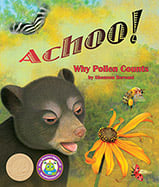Alignment to Standards for DC

| Grade | Number | Standard |
|---|---|---|
| 1 | SC.1.4. | Different types of plants and animals inhabit the Earth. |
| 1 | SC.1.4.1. | Explain that most living things need food, water, and air. |
| 1 | SC.1.4.4. | animals and plants are living things that grow, reproduce, and need food, air, and water. |
| 2 | SC.2.7.1. | Observe and describe how animals may use plants, or even other animals, for shelter and nesting. |
| 2 | SC.2.7.3. | plants and animals both need to take in water, animals need to take in food, and green plants need light. |
| 2 | SC.2.7.4. | materials in nature, such as grass, twigs, sticks, and leaves, can be recycled and used again, sometimes in different forms, as birds do in making their nests. |
| 2 | SC.2.8. | Many different types of plants and animals inhabit the Earth. |
| 2 | SC.2.9.2. | Explain that humans, like all living things, reproduce offspring of their own kind. |
| 3 | SC.3.6. | Plants and animals have predictable life cycles. |
| 3 | SC.3.6.1. | Recognize that plants and animals go through predictable life cycles that include birth, growth, development, reproduction, and death. |
| 3 | SC.3.6.2. | Describe the life cycle of some living things, such as the frog and butterfly, including how they go through striking changes of body shape and function as they go through metamorphosis. |
| 3 | SC.3.6.3. | Compare and contrast how life cycles vary for different living things. |
| 3 | SC.3.7. | Humans have a variety of mechanisms to stay healthy. |
| 3 | SC.3.7.1. | Explain that people need water, food, air, waste removal, and a particular range of temperatures, just as other animals do, although different animals can tolerate very different ranges of temperature and other features of their surroundings. |
| 3 | SC.3.7.4. | Recognize that food provides energy as well as materials for growth, maintenance, and repair of body parts. |
| 4 | SC.4.7. | All organisms need energy and matter to live and grow. |
| 4 | SC.4.7.1. | Explain that organisms interact with one another in various ways, such as providing food, pollination, and seed dispersal. |
| 4 | SC.4.7.4. | Observe and explain that most plants produce far more seeds than actually grow into new plants. |
| 4 | SC.4.7.5. | Describe the structures in plants (leaves, roots, flowers, stem, bark, wood) that are responsible for food production, support, water transport, growth, and protection. |
| 4 | SC.4.7.6. | Describe the many beneficial attributes of plants, including trees, in improving and sustaining an urban environment. |
| 4 | SC.4.7.7. | Explain how in all environments, organisms grow, die, and decay, as new organisms are produced by the older ones. |
| 4 | SC.4.8. | Humans have a variety of mechanisms to combat disease. |
| 4 | SC.4.8.3. | Explain that disease-bearing microorganisms, called pathogens, can enter the body and interfere with the proper function of various parts of the body. |
| 4 | SC.4.8.6. | Describe the bodyês defenses against pathogens, including tears, saliva, skin, some types of white blood cells, stomach secretions, and an internal system of chemical testing. |
| 4 | SC.4.8.7. | Explain that a healthy body can fight most invasive pathogens; however, some interfere with the bodyês defenses. |